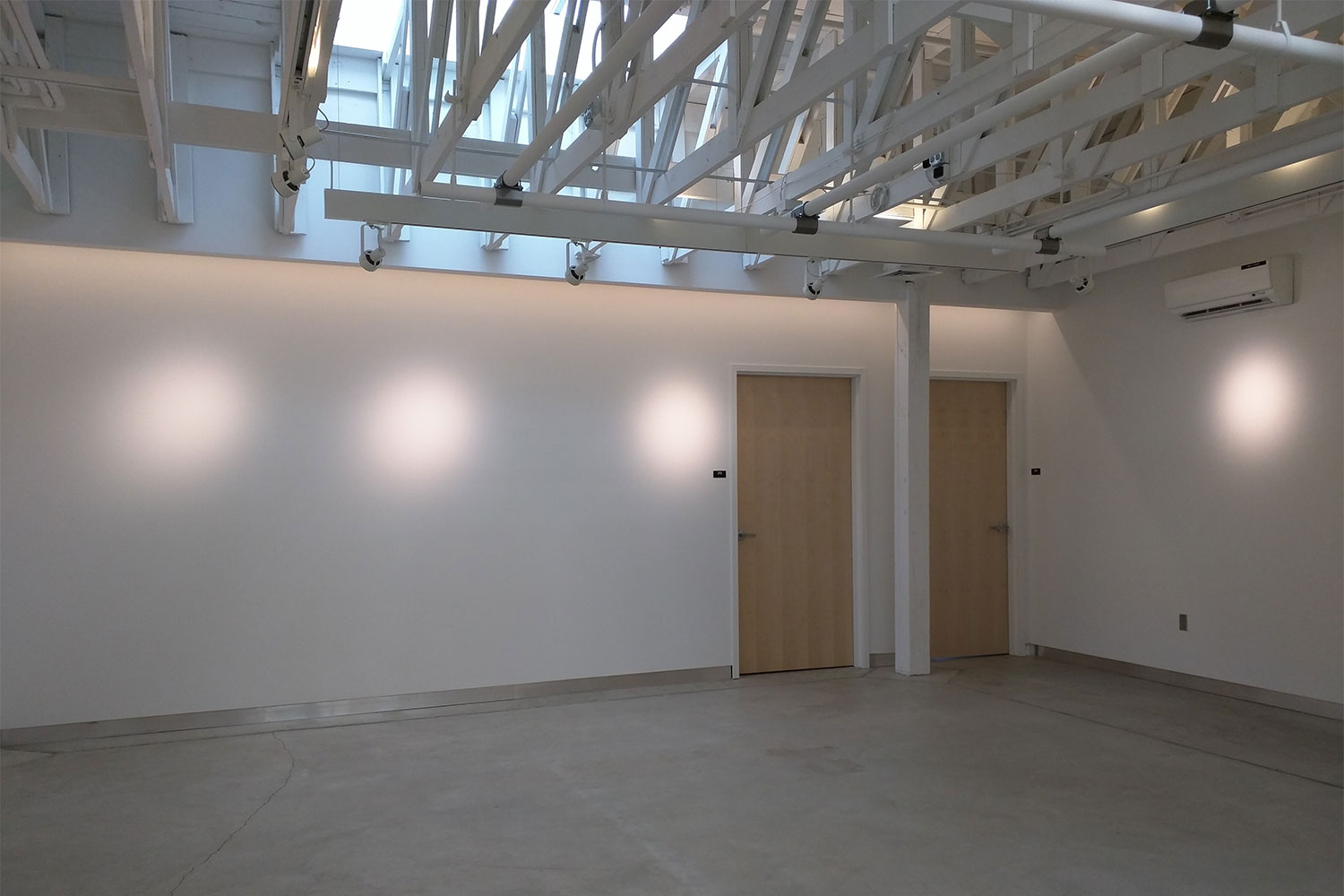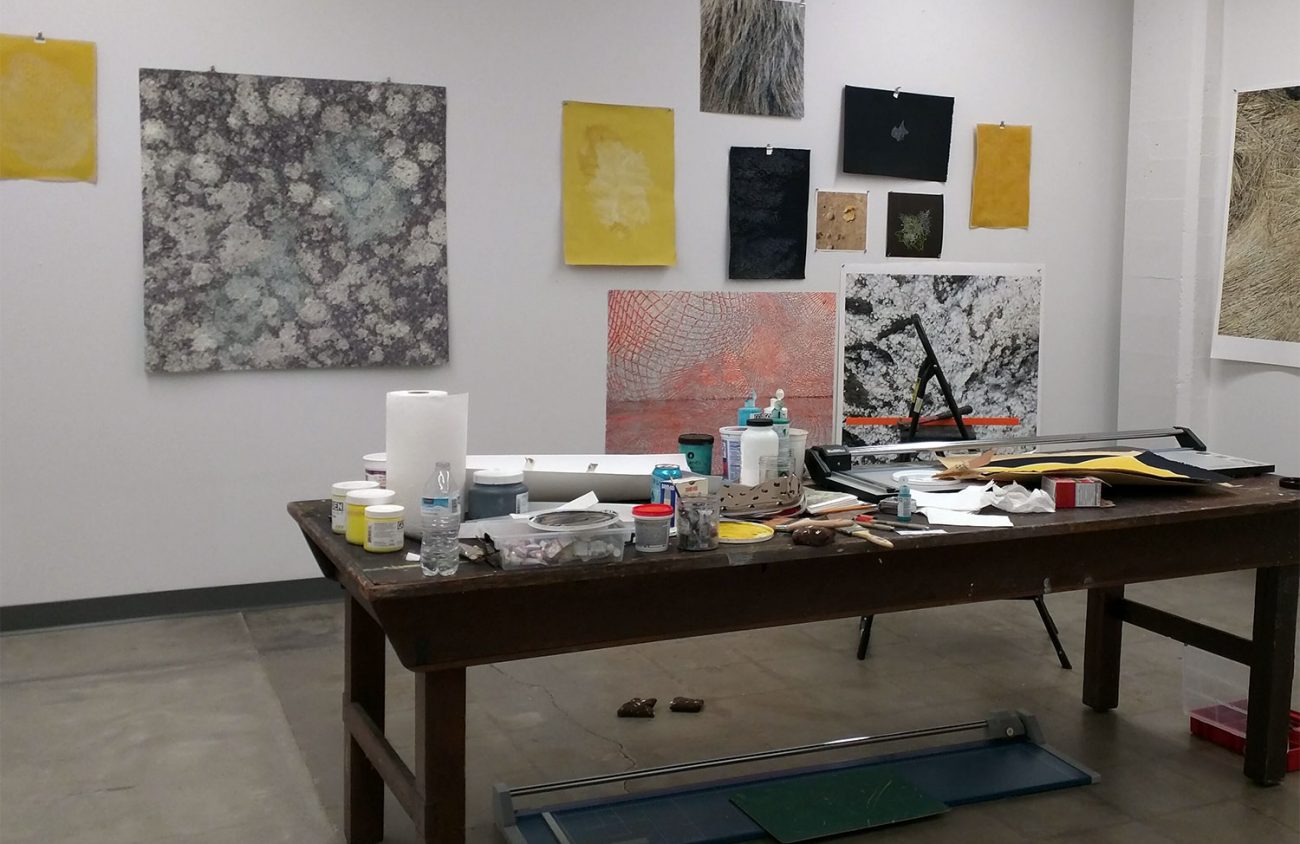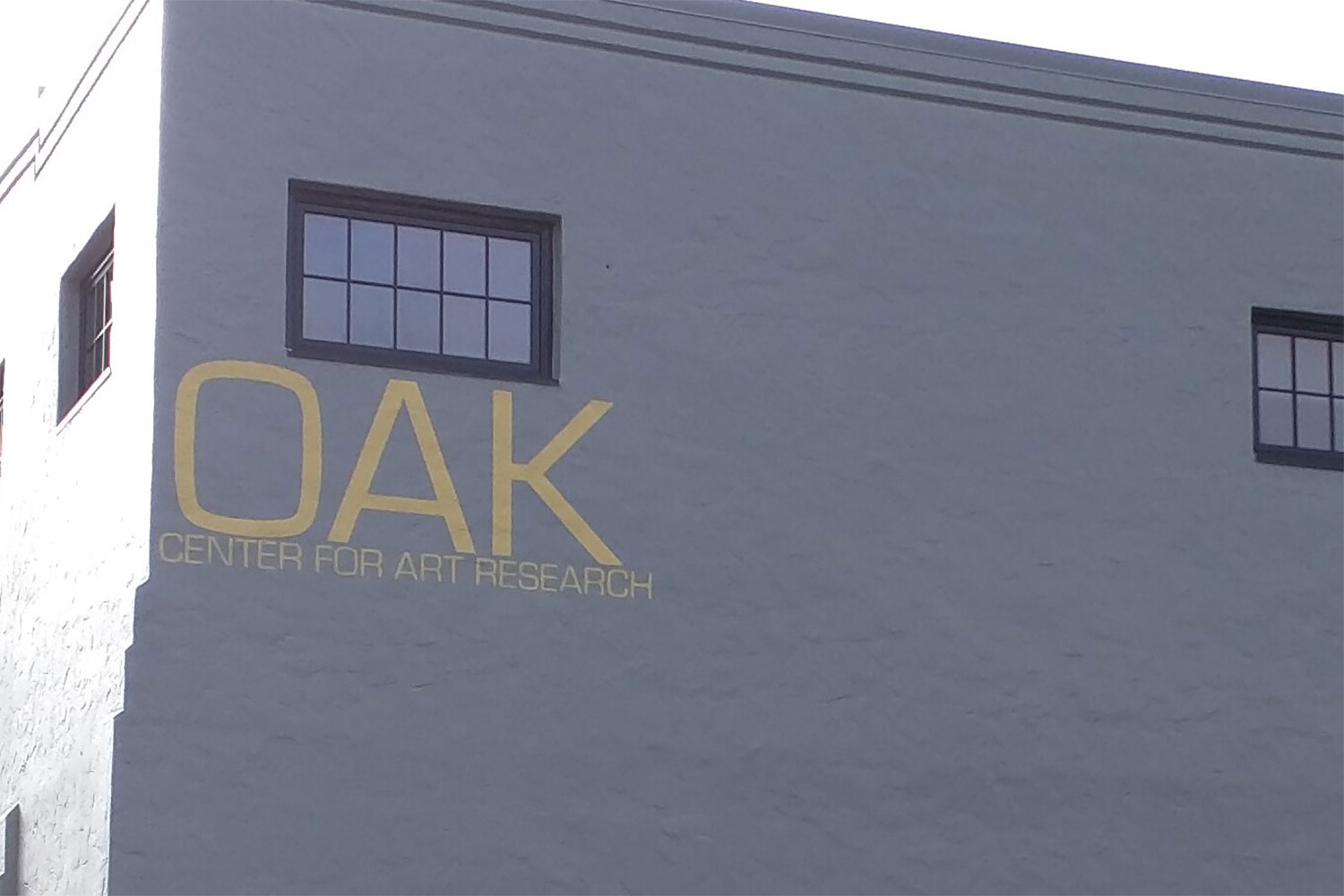The first thing I noticed about 510 Oak is how clean it was. Art buildings are usually splattered with paint and clay, marked with charcoal or ink.
But the new University of Oregon art building in downtown Eugene hasn’t had a chance to get marked up yet. Its new residents, the UO’s art and design faculty, are still getting settled in.
The building, which most recently housed Willamette Stationers at 510 Oak Street, was renovated by Eugene firm 2fORM Architecture, whose principal architect, Richard Shugar, teaches at the UO.
The drop ceiling was removed to open up the space, but the original freight elevator was left intact and will come in handy for transporting large materials to or from the second floor. It’s the only feature that seems left over from the building’s past.
Each studio in the remodeled building is the same size, though some have more natural light coming in, and two studios are double-sized, especially created for married design faculty who work together.
Erdem and Hale Selek work together as Selek Design, and John Arndt and Wonhee Jeong Arndt work together as Studio Gorm.
Laura Vandenburgh, head of art and design at the UO, teaches drawing and painting. I got a glimpse of her artwork on my tour of the building. She works with cut paper and gives a medium normally considered two-dimensional a sculptural presence.
“The paper becomes the drawing itself,” is the way she describes the transformation.
The new building for faculty studios is all about making art. It is not for meeting students; faculty offices remain on campus. Vandenburgh calls the move to Oak Street “a watershed moment … it represents a serious commitment by the institution to what we do.”
To make a far-flung comparison, in Amsterdam the building where Rembrandt lived and worked is now a museum. It struck me when I visited there that people living in his community must have passed his residence and workspace the same as they did other residencies or shops.
Art as a profession was just a part of life, not an occupation that was tucked inside a campus. This building might benefit the community in the same way: to remind us that Eugene is a place where artists work.
We have artists here.
Studios are to artists what laboratories are to scientists, Vanderburgh says: places where faculty question, experiment, work together and share their results.
Until now, the UO art faculty has worked in studios scattered across campus and town. Making art under the same roof will create an atmosphere where artists can informally ask for and provide creative feedback from each other.
Enlarge

The common areas will offer more formal settings in which to work out problems, display art and seek critique. For instance, on First Friday ArtWalk in December, the ground floor common area was used to exhibit art so the public can get an idea of what each faculty member is experimenting with.
The common space will also be used to present guest artists, curators, critics, etc., and these events will also, on occasion, be open to the public.
Mostly, though, the new UO faculty studios will be a place of work.
If passersby glance through the window of the building at Oak Street and Fifth Avenue, the studio they are most likely to see — the one on the corner — is that of Trygve Faste, a product design faculty member. Vividly colored ceramics are on display on a table by his window, geometrically designed paintings hang on one wall and what appear to be graphic novel pages hang on another.
Trygve’s studio looks like it belongs to a contemporary artist — a “maker” who isn’t identified entirely by one medium.
Though Vandenburgh doesn’t necessarily see the Oak Street building as participating in a First Friday ArtWalk on a regular basis, being the first stop on the December tour — inviting the public in to the work space, speaking formally and informally, displaying work by art and design faculty — signifies a new level of interaction with the community, you could say, in the making.
UPDATE: The story has been changed to clarify that the building itself is called 510 Oak; it will house the UO’s Oak Center for Art Research.

